SCHOFIELD BARRACKS, Hawaii – The 25th Infantry Division hosted a Program Executive Office (PEO) Soldier portfolio overview/demo town hall and operational kit analysis overview, July 11-13, 2023.
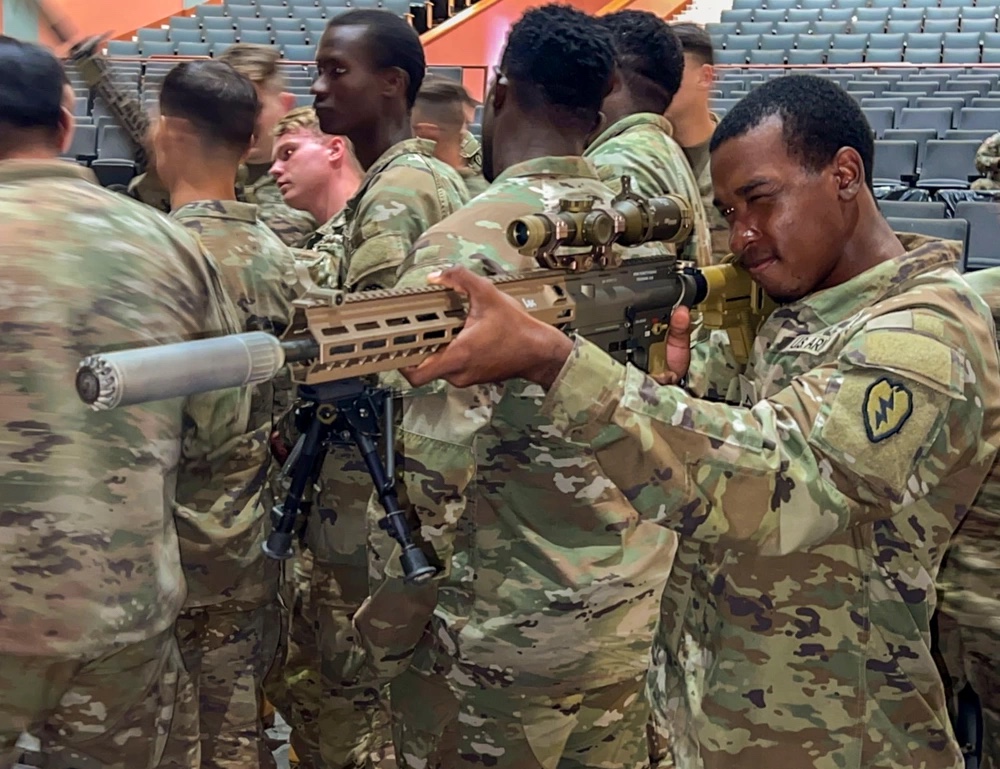
The two-part multiday event was held for PEO Soldier to gather holistic data and receive feedback from Soldiers about innovative solutions and for 25th Inf. Div. Soldiers to gain a better understanding of products that are being developed and fielded to the force.
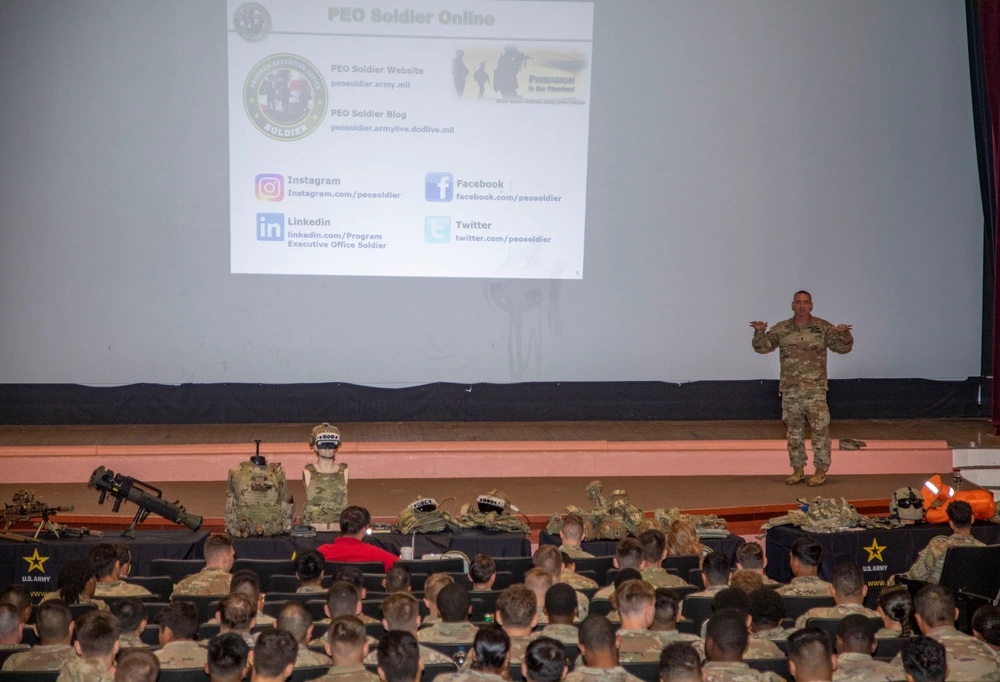
PEO Soldier is one of the Army’s leading producers of capabilities such as body armor, helmets, legacy weapon systems, sensors and lasers.
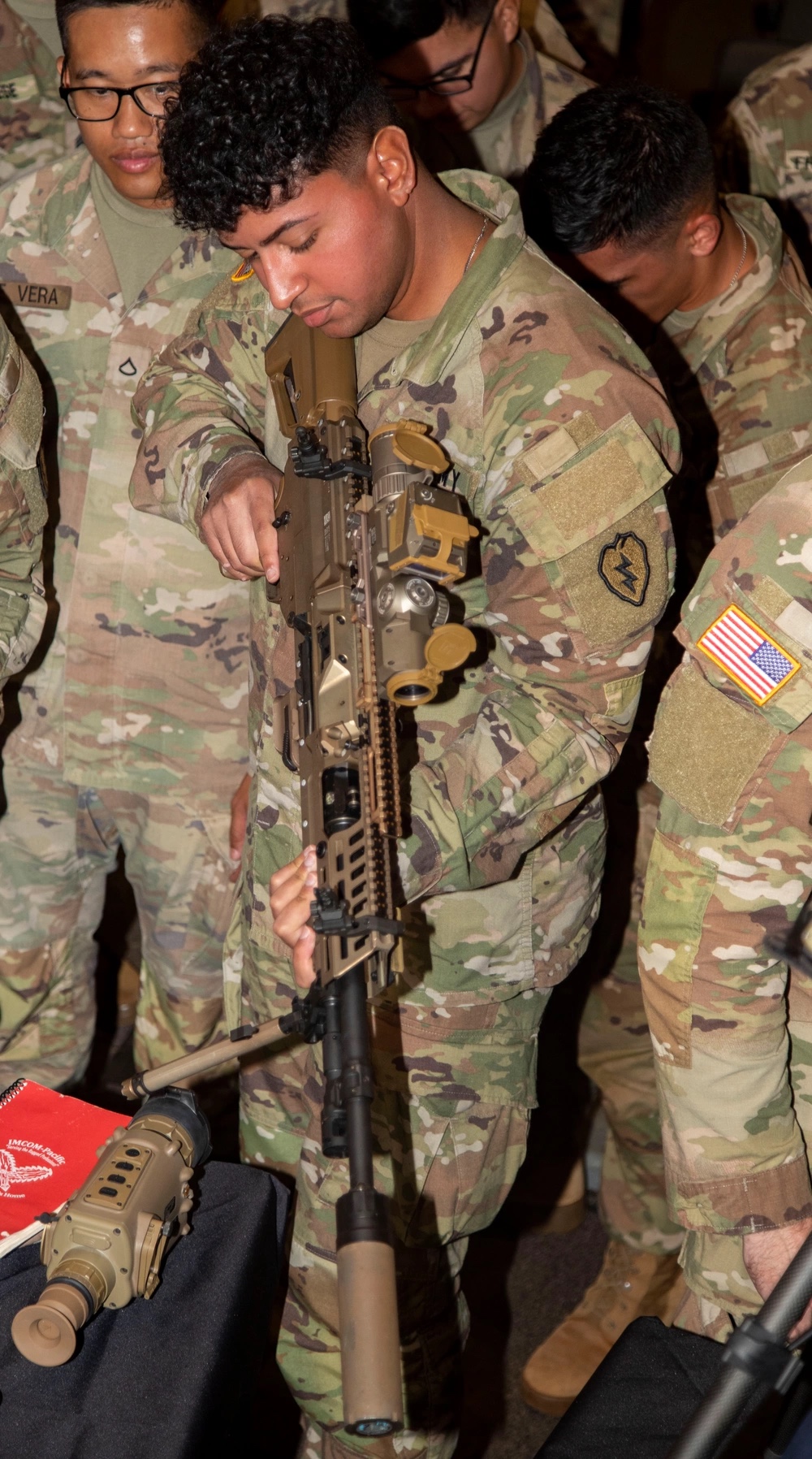
“We’re the acquisition organization that deals with everything the individual Soldier wears, shoots and uses,” said U.S. Army Sgt. Maj. Daniel Rose, the PEO Soldier sergeant major. “What we’re doing is making sure Army Soldiers have overmatch over the enemy by increasing capabilities, lethality, situational awareness and protective equipment.”
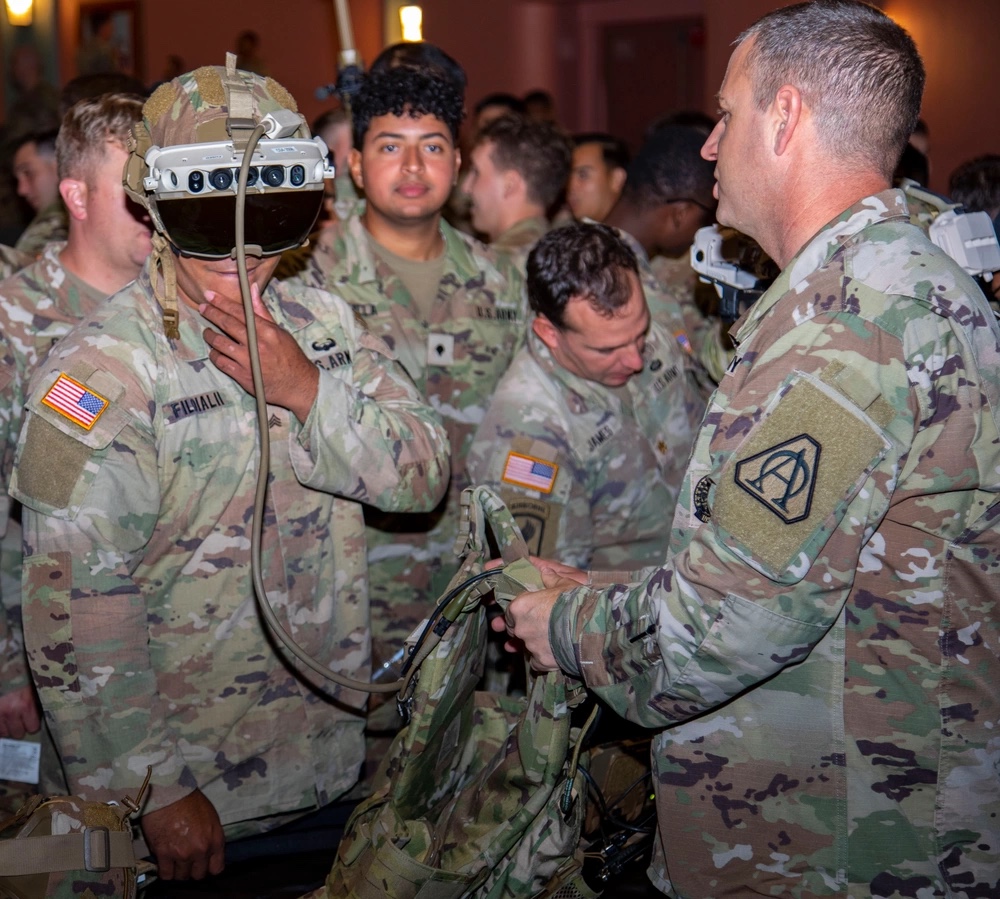
During the analysis, PEO Soldier representatives gathered equipment inventories, conducted targeted questionnaires and interviews, and received Soldier feedback, while during the demo, 25th Inf. Div. leaders and Soldiers gained insight and were provided a firsthand look at future technology and equipment set to be implemented within the Army.
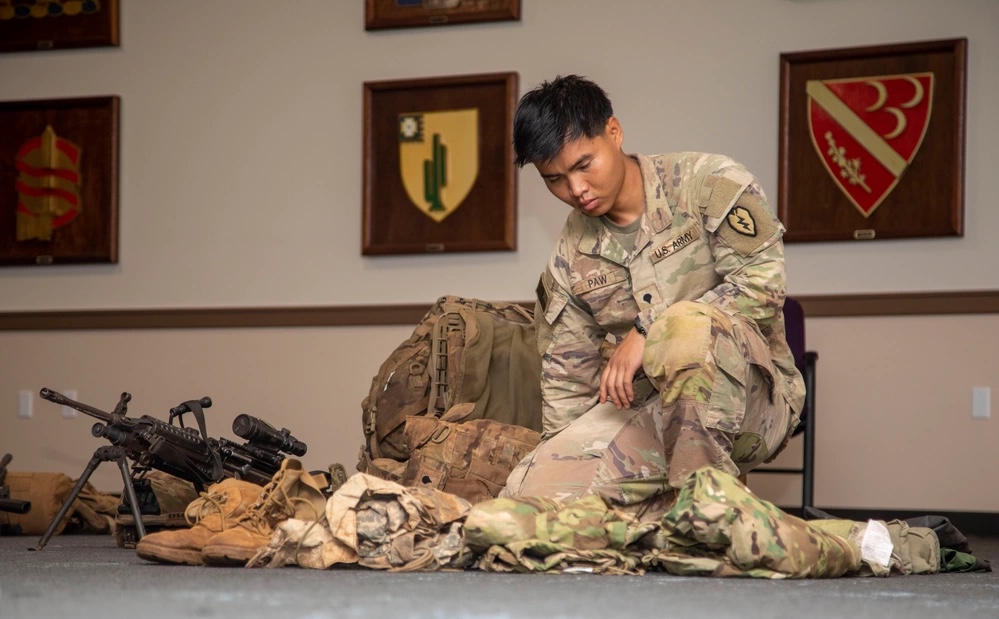
“It was a great feeling to pick up and grab the new systems and gear that I can potentially use in the future,” said U.S. Army Pvt. Jeremiah James, an indirect fire infantryman assigned to 2nd Squadron, 14th Cavalry Regiment, 2nd Infantry Brigade Combat Team, 25th Inf. Div. “I think it improves unit morale and sparks excitement amongst Soldiers, especially infantrymen, when we have something cool to look forward to learning and using.”
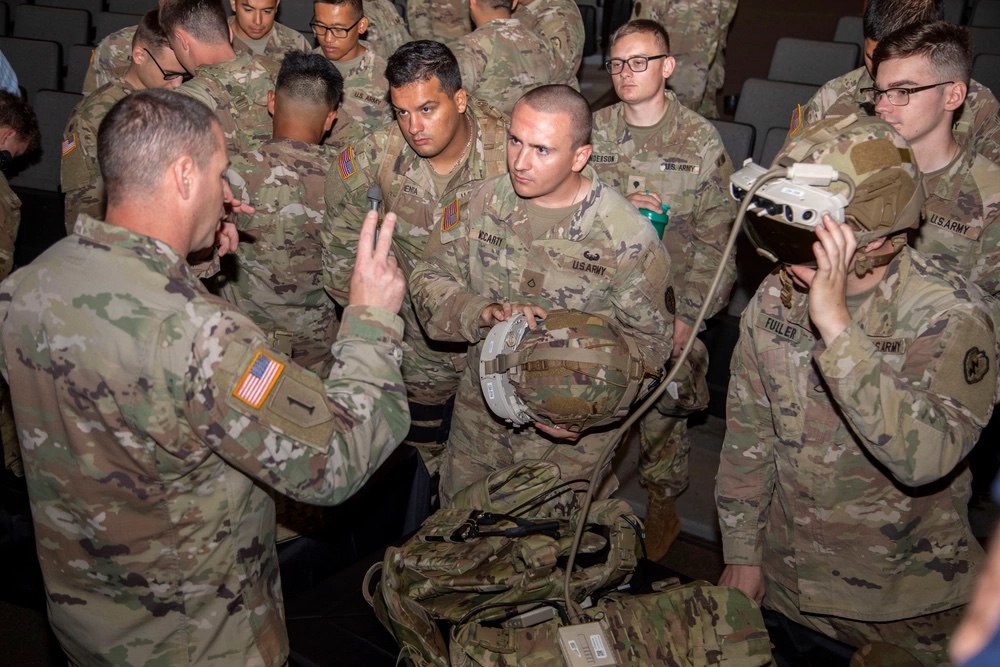
Throughout the demo, PEO Soldier showcased an array of updated equipment, to include the Next-Generation Squad Weapon (NSGW) rifle and automatic rifle, the Integrated Visual Augmentation System (IVAS) headset, the new integrated head protection system, and the Aircrew Combat Equipment (ACE) vest — one that 25th Inf. Div. Combat Aviation Brigade Soldiers are currently the only Army unit to train with.
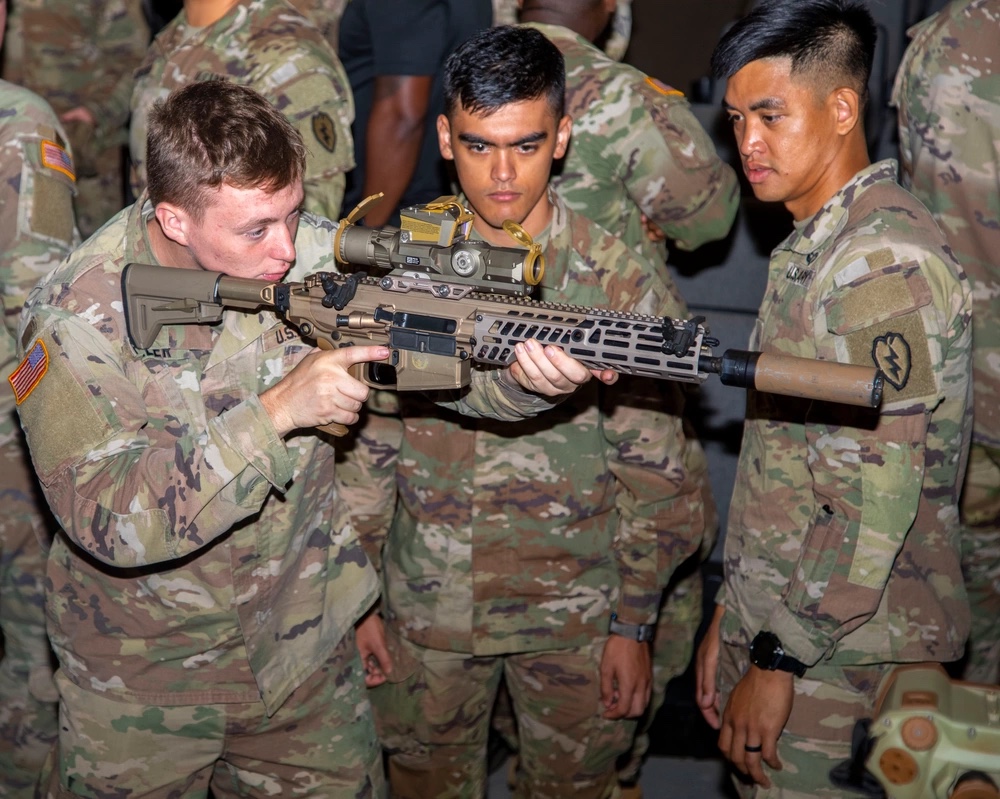
“It’s good to see that the Army is constantly improving our equipment, and that PEO Soldier is here to help us as jungle Soldiers,” said James. “Hopefully, PEO Soldier continues the demo, so we can always have a vision of what’s to come in the future.”
The Operational Kit Analysis portion consisted of Soldiers from both the 2nd and 3rd IBCT’s conducting a squad-level organizational clothing and individual equipment (OCIE) layout, where PEO Soldier examined what equipment 25th Inf. Div. Soldiers would bring into a 72-hour jungle operational environment.
“As we look to build the Soldier of 2030 and 2040, we’re here trying to collect information on what the current jungle Soldier looks like and what they may need,” said Rose. “Operational testing is super important to us. We want to make sure we’re informing the Soldiers and leaders of how important those touch points within the organization are, and how valuable it’ll be for them to have overmatch on the battlefield in the future.”
The nine-Soldier squads from each brigade completed an observational day of layouts, and also had the opportunity to speak with PEO Soldier representatives one-on-one about their thoughts on current equipment, and what may be needed in the future.
“I’m definitely happy that [PEO Soldier] is coming straight to the Soldiers using the equipment and asking us what it’s like,” said U.S. Army Spc. Carson Frantz, an infantryman assigned to the 2nd Battalion, 35th Infantry Regiment, 3rd IBCT, 25th Inf. Div. “It’s important to get feedback from us. I hope they continue the analysis because there’s always going to be new weapon systems, new problems, and different environments, so making the equipment better makes the Soldier better.”
Story by SGT Alvin Conley, 25th Infantry Division


The size of that chonker rifle is absurd. America’s 21st century M14.
It’s not as heavy as you might think. Loaded with supressor it’s about the same as an M27. It wouldn’t break M14 weight until
The optic.
The Fire Control Unit is a key, if not critical, aspect to the NGSW effort. To not consider the total, fully-burdened, weight including full magazine, suppressor and FCU isn’t intellectually wholesome.
It’s not dishonest it’s living in reality. We don’t know the weight of the XM157 it’s not yet to be released to the public. Not by Vortex not by the Army. So we can only compare based on the weight of the weapon. We can find estimates but that’s about it.
Sure. But it’s also dishonest to just call it America’s 21st century M14 based purely on weight. The M14 was heavy, long, unsilenced, uncontrollable in full auto, and had iron sights at that weight. Weight wasn’t the only reason the M14 was a failure.
Maybe the capabilities of the M7 system won’t be worth the weight. Maybe not; we’ll see. But it offers exceedingly more capabilities than the M14 for the same weight. They are not apples to apples.
“It’s important to get feedback from us. I hope they continue the analysis because there’s always going to be new weapon systems, new problems, and different environments, so making the equipment better makes the Soldier better.”
I couldn’t agree more, SPC Frantz!
I enjoyed reading this article. I also enjoyed resisting the urge to give into a basic Boomer vetbro sense of morale panic and outrage at the clear need for some haircuts and shaving among some of these Joes.
Even the millennial had to fight that urge.
Why do they keep doing this? IVAS gets mauled in every end-user feedback, but someone keeps pushing it along. Millions of dollars spent and ENVG-B is still a better solution. Even SOCOM is looking for something different.
That’s how you do R&D. Develop, test demonstrate get feedback. If mauled back to the lab, work on the feedback improve the product, demonstrate again get more feedback.
The damning indictment, when it comes to the IVAS touchpoint feedback loop, came from the DOD IG:
“However, IVAS program officials did not define minimum user acceptance levels to determine whether IVAS would meet user needs. This occurred because Army policy did not require program officials to define suitable user acceptance levels. Procuring IVAS without attaining user acceptance could result in wasting up to $21.88 billion in taxpayer funds to field a system that Soldiers may not want to use or use as intended.”
This broken approach is why many folks have zero faith that IVAS will be a viable and worthwhile pursuit.
Referenced DODIG finding from “Audit of the Army’s Integrated Visual Augmentation System (DODIG-2022-085)” found here:
https://www.dodig.mil/reports.html/Article/3007502/audit-of-the-armys-integrated-visual-augmentation-system-dodig-2022-085/
The fact they have said criticism shows the approach is within the bounds of the R&D cycle. Where an obvious issue exists. Earlier this year the Army issued an order to Microsoft to make corrections to the IVAS. The very corrections we are discussing. https://defensescoop.com/2023/01/05/army-task-order-microsoft-better-version-of-ivas-hololens-headset/
Farther much as you pointed out in my comments about the XM7. IVAS is not a 1:1 replacement for ENVG-B. Much like ENVG isn’t a 1:1 for older light amplifiers it’s adding capabilities that were not available on its predecessor. IVAS is meant to give the Infantryman augmented version in not just night but Daylight too. That’s why comparisons don’t work and it’s so difficult.
Apples to Oranges. They are not used for the same things at all. The only “solution” that ENVG-B is better for is as a night vision device. The 1.2 helmet mounted version of IVAS is going to outplay it in literally every other respect – one is only useful at night time, the other all the time. The future is now, old man.
I presume its due to the IVAS being the longterm solution to the technical hurdles involving the analog I2 tubes and integrating digital information into them. ENVG-B is a better solution today but its kicking the can down the road still.
Either that or the parties involved with IVAS are massive and have plenty of weight to throw around.
ENVG-B is an upgraded replacement to current reduced visibility solutions.
IVAS is designed to be much more than a better set of night vision goggles.
I imagine that they have a plan..but every time I see 7.62NATO weapons around NGSW, I feel weird.
The M240 I can understand, in light of Army interest in A) rechambering them to 6.8×51 and B) the SOCOM LMG-M.
But the CSASS…just makes me laugh. It’s a heavier, bulkier weapon than an XM7, firing a round with a worse BC, at the same velocity as an XM7/6.8 package (assuming the CSASS is being fed M80A1).
I do wonder what plans the Army has coming down the line for replacement of these legacy platforms, should NGSW stick around. Longer barrel MCX-Spear for M110/M110A1 replacement? 6.8 loading optimized for accuracy/precision? Caliber conversion of legacy platforms if possible?
It’s all very interesting.
First it has to be pointed out M110 is now 5 rifles. The M110 SASS, M110A1 CSASS, M110A1 SDMR and the lesser known M110A2 an improved M110 and the M110A3 rechambered in 6.5 Creedmoor.
The First units to get the M110A1 SDMR seem to be NG units with I think could help clear up the part of the contradiction. NG units are generally the last to get new rifles like the XM7. They will likely be using 5.56x45mm and 7.62x51mm well into the 2050s requiring a DMR in 7.62x51mm.
Then other services come on who have yet to jump into 6.8x51mm are also using M110A1 CSASS /A2 PIP for their own purposes. As such the Army is still buying well having stocks of the legacy M110 and for Socom kits for A3. Even if the army dropped it for its self, The M110 family would still be service for the USAF,USMC, USN and potentially USSF with the Army as the purchasing agent.
Because the M110 in the CSASS or SASS is classed as a Sniper weapon it’s not a regular infantry weapon but a specialists tool. So until the Army decides to replace it. M110 can sit separately of M7, much like how M21 (M14) did M16.
Ok, firstly, the “M110 family” isn’t 5 different weapons. At best it’s 3 different weapons spread over 5 configurations, and that’s being generous. I’ll give you that the M110 SASS and the A2/3 are “different enough” from each other to be considered somewhat separately (at least as far as KAC components go)…and the KAC rifles are obviously entirely different from the HK guns.
But, the M110A1 is the same gun, regardless of what optic the Army puts on it. Sure, different nomenclatures for different “configurations” (which itself is asinine)…but it’s no more of a different gun than an M27 is to an M38, technically.
Next the only HK guns in the field active or NG, are the SDMR. It doesn’t appear that the Army has fielded any CSASSs, or has any interest in doing so, with funding being diverted towards the SDMR configuration in the same way that the M110 sustainment contract from 2019 was modified to provide A2’s and A3’s. The fact that the A2/3 are being purchased at all further supports that.
But none of that is actually related to the fact that, unless there is some glaring accuracy issue with the XM7’s, the XM7 should be superior to the M110A1 in every way. The Spear system should also be capable of providing the same capability/ergonomics as the KAC A2/3 rifles, again, unless there is some odd hang up.
The added capability that a sniper would have, with say a 20” MCC Spear (when paired with an optimized 6.8×51 loading), would vastly surpass current systems, both in terms of lethality and external ballistics, which was the entire reason for being for NGSW anyway.
It’s simply odd that a program which represents a paradigm shift in Army small arms and capabilities, which out paces (or makes obsolete) several weapons not currently subject to the program, doesn’t appear to have any consideration of that fact.
I could buy the argument that “legacy platforms” (SASS, M110A1, A2) will be given to the NG, while the active brigades get XM7’s and derivatives, but if that’s the case that’s easy to say.they aren’t saying that.
Furthermore, I don’t buy the “30 years to fully adopt” NGSW hardware for one second. Aside from the fact that taking such a slow procurement track would add untenable logistics issues in the case of a peer conflict abroad, the Army has been seemingly moving with a quickness to get these weapons and ammo to the finish line…per SSD the Army has plans for divesting USASOC of 6.5CM/7.62 NATO in favor of 6.8 (arguably a larger change than the M110 issue, given that users of 7.62NATO/6.5CM in USASOC are not limited solely to snipers/DM’s). The difference between 5.56 and 6.8×51 is orders of magnitude larger than 7.62NATO/6.5CM and 6.8×51…and again we’re talking about relatively small populations of users (big Army designated marksmen and snipers, USASOC snipers, and NG designated marksmen/snipers). M4’s in the guard in 2030 is believable… M110A1’s in NG units in 2050 is absolutely not believable and laughable.
Good analysis, but I remember ancient M1D (Garand) sniper rifles in my NG arms room in ’87. It all depends upon priorities and funding…
IIRC, 4 M1D’s per NG Infantry company, and 4(?) 12 gauge pump shotguns. I think the shotguns were a NG-specific MTOE item required by the National Guard Civil Disturbance mission.
Oh absolutely, I’d hazard guess that the era you’re talking about also saw Grease Guns remaining in some armored vehicles.
I think that the hangup for me is that the “Army of today” prioritizes small arms much more than the army of the late Cold War…i’d even go so far as to say that it prioritizes snipers (and obviously designated marksmen) exponentially more so, than the Army of then.
I struggle to understand exactly what it is that’s holding them back from addressing these seemingly obvious capability gaps. For an organization that’s pushed so hard to achieve revolutionary change (and been able to do it)…ignoring the “low hanging fruit” baffles me.
I have a feeling that there’s a problem somewhere, or that we’ll see an ECP (which addresses this issue) snuck into one of the purchase/sustainment contracts when the flood gates open and fielding of NGSW begins. I simply cannot believe that Big Army has 0 plans for what happens to non M4/M249 small arms.
The M110 series of rifles predate the fielding of the M7, so why wouldn’t they co-exist for a period of time?
I would hope they have an SDM variant of the M7 in the works, but until they field one, they M110 is what we have.
As for precision between the M110s and the standard M7? I have no idea. I don’t think there have been any studies on that yet.
If we’re still using M110s alongside M7s in 10 years, then I’ll hope right on board with you saying it’s weird the M110 is still around. But the M7 isn’t even fielded yet for normal issue. It’s still being tested.